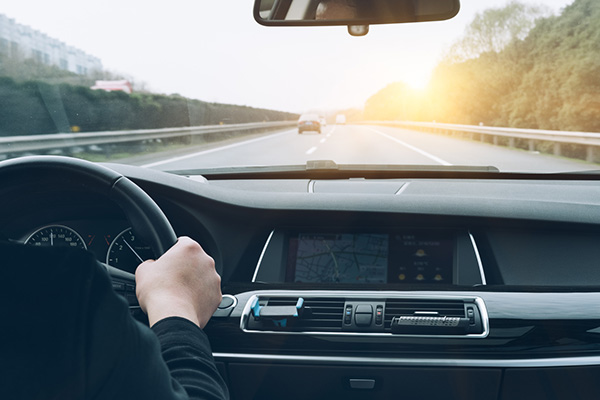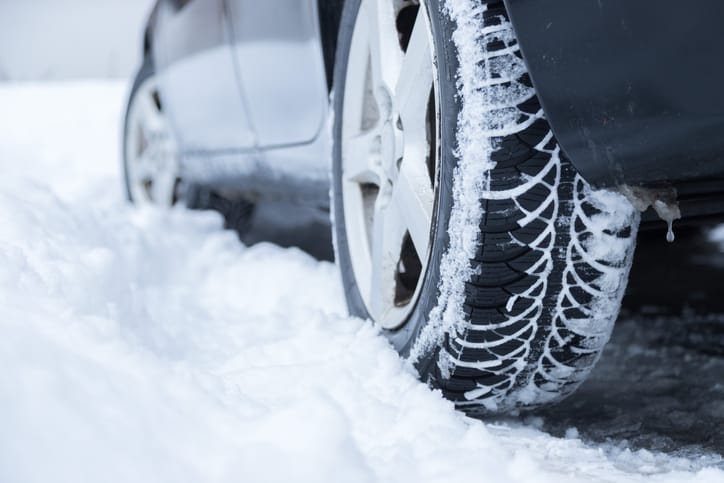When temperatures drop and the snow flies, it’s no secret that operating a motor vehicle can become a challenge, even among the best of drivers. Along with an abundance of caution, care, and experience, the simple act of being well-prepared can be crucial to driver safety during the winter months.
Winter driving preparedness and emergency planning can help keep you safe and decrease the risk of an emergency. This blog provides a few steps that you can take to ready your vehicle and stay safe, before you hit the road.



Step One: Winter driving preparedness for your vehicle
What should you (or your trusted mechanic) check your vehicle for before hitting the road in the winter months?
Windshield wipers
Test your windshield wipers to determine if they are in good working condition or in need of replacement. Is there anything that could disrupt wiper movement, such as autumn leaves stuck in the windshield wiper basin? Don’t forget to check windshield wiper fluid levels and keep spare fluid in the vehicle. This is something that may seem so trivial but can have a big impact on visibility.
Tire tread and pressure
Tire tread provides the ability to grip the road and offers traction. Check out this video to learn more about checking your tire treads. Look for any visible damage to your tires. Do you notice any uneven wear? Can you see any tears, punctures or cracks?
Air pressure helps tires distribute the weight of the vehicle evenly across the tire’s tread. Follow your vehicle’s tire pressure guidelines, which can be found on the placard on the inside of the driver’s side door, or in your vehicle’s manual. To check your tire pressure, there is a gauge on air machines at gas stations, or you can purchase one to keep in your car.
Carry a spare tire and regularly check its air pressure, the tread depth, the manufacture date, and that there is no cracking in the sidewalls and in between the treads.
Vehicle lights
Test your vehicle lights while someone is standing outside of your car to confirm that your lights work. Check headlights and high beams, taillights, daytime running lights, emergency flashers, indicator lights, fog lights and dome lights.
General maintenance: Oil and car battery care
When was your last oil change? Mechanics will recommend mileage and provide a date for the next oil change on a sticker located on the driver’s side windshield. If you’re still unsure, your owner’s manual has a recommended time frame to follow.
A malfunctioning battery can have the following symptoms: your vehicle is difficult to start on cold mornings, the car starts inconsistently, your radio doesn’t have sound, or your dome lights don’t turn on. These warning signs indicate that you need a mechanic to run some tests and potentially replace a faulty battery. It never hurts to carry jumper cables – or even a portable battery charger – in your vehicle.
Step Two: Preparing yourself before winter
In addition to preparing your vehicle, there are several steps that you can personally take to be prepared for the unexpected.
Consider hiring an emergency service response company
Companies like AAA and OnStar provide emergency services such as changing a flat tire, re-charging a dead battery, and towing. Similar roadside services may be available through your private insurance company.
Prepare an emergency kit
Carrying along some extra items can go a long way in ensuring your comfort and safety, just in case you find yourself stranded for a lengthy amount of time. Packing the following essentials before a road trip is always a good idea:
- Drinking water
- Nonperishable, high-protein snacks
- Warm gloves
- A phone charger
- A basic first aid kit
- An extra blanket and/or warm clothing
A snowbrush with ice scraper is an obvious necessity in the inclement winter months, but some people also like to carry a compact snow shovel and kitty litter (or sand) to clear snow and provide traction.
Other tools that you may want to carry in the vehicle include a car jack, ratcheting socket wrenches, screwdrivers, work gloves, and a flashlight. Helpful miscellaneous items may include reflective cones or flares, a whistle, a red bandana or cloth, matches, pen and paper, garbage bags, and paper towels.
Step Three: What should you do in an emergency situation?
There are a number of different emergencies that can occur during the winter months. Below are some tips for handling the unplanned event.
Driving in a winter storm
Put your emergency flashers on. If you’re still driving, increase the following distance of the car in front of you.
Pulling over or getting your vehicle stuck in the snow
If you are stuck in the snow, you can try using your floor mats, kitty litter, or sand for traction, but beware of other vehicles on the road while you are outside of your car. In many cases, it is best to wait for professional help from inside of your vehicle.
If you decide to pull over, keep your emergency flashers on and remain in your vehicle, only exiting if necessary. For instance, in the case of heavy snow, you may want to exit briefly to be sure the exhaust isn’t blocked, which can cause carbon monoxide poisoning. Run the engine for about 10 minutes every hour, while opening the window for fresh air to avoid carbon monoxide poisoning. If you are awaiting emergency responders, tie a brightly-colored cloth to the antenna or to your door. When the snow eventually stops, raise your hood to indicate you need help.
Being involved in a car crash
Your first priority during a crash is to check yourself and other passengers for injuries. Call 911 to report any injuries and to dispatch law enforcement to your location. If someone is hurt, do not move them until a medical professional has given the all clear – unless the vehicle has caught fire.
Whether or not there are injuries, it’s common to immediately begin worrying about insurance and liability. Rest assured that law enforcement will conduct a thorough investigation. They will document each driver’s information, and may use L-Tron’s 4910LR driver’s license reader to quickly fill out their crash reports. They will conduct interviews and take notes on what happened in the crash. They may even document the scene with L-Tron’s OSCR360 system, which will allow them to virtually revisit the scene during later points in the investigation. Should an at-fault driver need to be prosecuted, OSCR360 software is an effective courtroom tool that visually organizes and presents each piece of digital evidence. Remember – law enforcement officers have these tools to serve, protect and help you.

Experiencing a flat tire
Do not stand behind or in front of your car. Even though it’s pulled over, another car could strike yours. If you are confident in your ability to change the tire yourself, move your vehicle to a safe spot. Review the vehicle’s manual to go over the tire changing procedure.
Hydroplaning or hitting black ice
If your vehicle starts hydroplaning on water or sliding on black ice, remain calm and gradually slow down by removing your foot from the gas pedal. Do not slam on the brakes because this can cause your vehicle to spin out and lose control. For hydroplaning, use a light pumping action on the brake pedal and steer into the direction your car is moving. Wait until you regain traction before pressing the gas pedal. For black ice, try to keep the steering wheel straight and do not touch the brakes (if possible) until your vehicle has passed the ice and regained traction.
Additional winter driving preparedness tips
Did you know that the best way to warm up your car during the cold months is to just get in and start driving? Idling your car will take 15-20 minutes to warm up, versus the 5-10 minutes of driving.
Be sure to clear all of the snow and ice on your car before you hit the road. The snow on top of your vehicle can be dangerous for other drivers around you. Some states even penalize motorists if the snow isn’t completely cleared before driving.
Finally, remember that state and county guidelines are put in place to protect citizens. Follow them and check for updates frequently during inclement weather. Stay safe out there!
Have additional winter driving preparedness tips? Share with us on social media @Ltroncorp. Interested in more information on safe driving? Check out a few of additional resources: